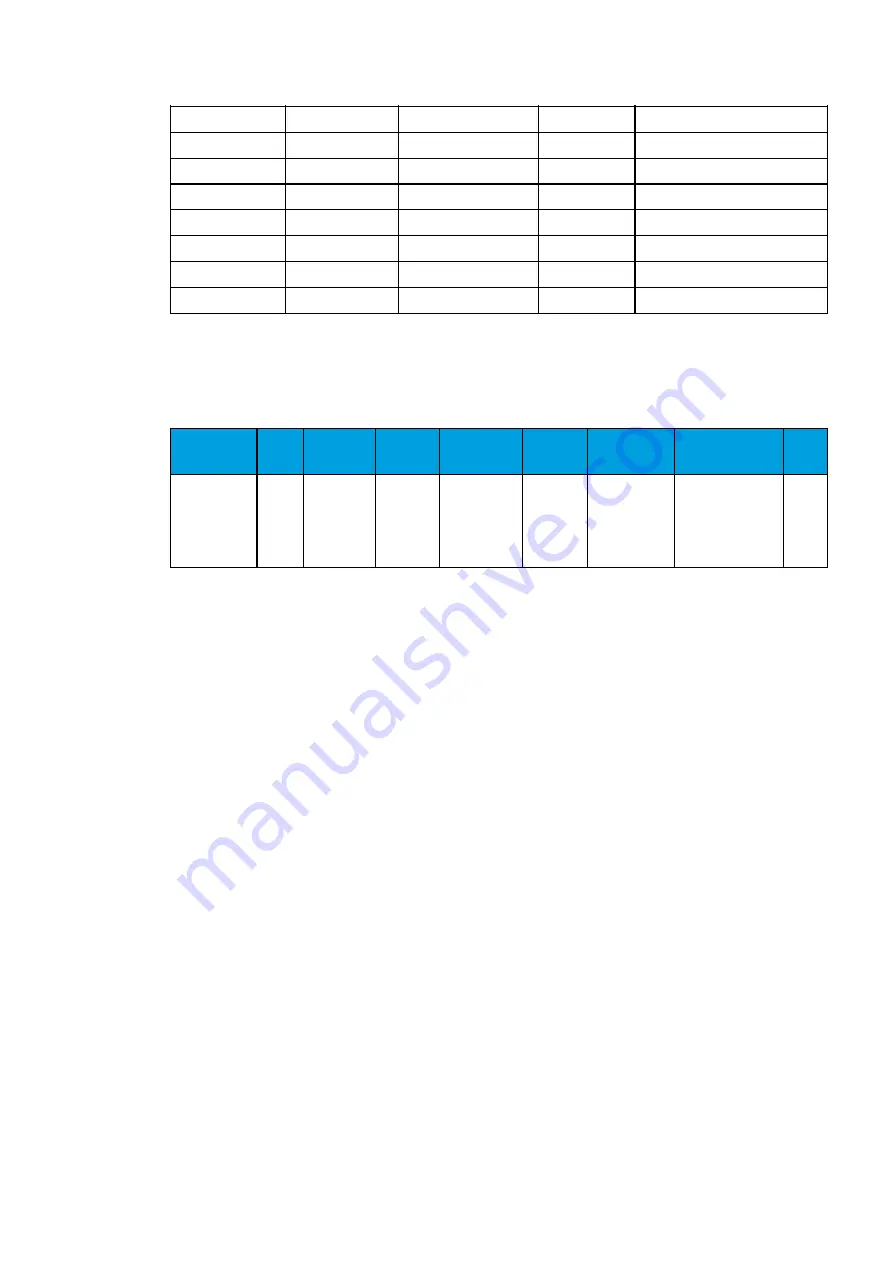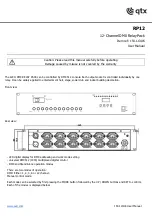
7300
114
IEF1
4
Trip ON
7301
114
IEF1
5
Trip OFF
7302
114
IEF1
6
Block ON
7303
114
IEF1
7
Block OFF
7304
114
IEF1
8
Intermittent EF detected ON
7305
114
IEF1
9
Intermittent EF detected OFF
7306
114
IEF1
10
Normal earthfault detected
7307
114
IEF1
11
Intermittent EF Locked
In the register of the IEF function is recorded start, trip or blocked “On” event process data. In the
table below is presented the structure of HOC function register content. This information is available in
12 last recorded events for all provided instances separately.
Table. 5.4.6. - 87. Register content.
Date & Time Event
code
Trip time
remaining
Started
FWD
Spikes
FWD
Started
REV
Spikes REV
Spikes to trip
Used
SG
dd.mm.yyyy
hh:mm:ss.mss
7296-
7307
Descr.
Time
remaining
from the
set
operating
time
Yes / No
indication
of forward
start in
this fault
Calculated
cumulative
amount of
forward
(faulty feeder
spikes)
Yes / No
indication
of reverse
start in
this fault
Calculated
cumulative
amount of
reverse
(healthy
feeder spikes)
Set spikes to trip
subtracted by
cumulative
forward spikes. If 0
spikes enough for
trip.
1 - 8
5.4.7. Current unbalance I2> (46)
Current unbalance function (CUB) is used for instant- and time delayed unbalanced network protection
and detection of broken conductor for various applications including feeder, lter and machine
applications of utilities and industry. The number of available instances of the function depends of the
IED model. Function measures constantly negative- and positive sequence current magnitudes which
on the operating decisions are based. In broken conductor mode (I2/I1) phase current magnitudes are
monitored also for minimum allowed loading current.
Two possible operating modes are available, I2 mode which monitors negative sequence current and
I2/I1 mode, which monitors the ratio of negative sequence current ratio to positive sequence current.
The used symmetrical component magnitudes are calculated in the relay from the phase current inputs
IL1, IL2 and IL3. Zero sequence current is also recorded into the registers as well as the angles of the
positive, negative and zero sequence currents for better veri cation of the fault cases. Blocking signal
and setting group selection controls the operating characteristics of the function during normal
operation.
Outputs of the function are Start Trip and Blocked signals. Setting parameters are static inputs for the
function which are changed only by user input in the setup phase of the function. Non-directional
unbalance function utilizes total of eight separate setting groups which can be selected from one
common source.
The function can be operating on instant or time delayed mode. In time delayed mode the operation
can be switched to de nite time or IDMT mode. For IDMT operation IEC and ANSI standard time
delays are supported as well as custom parameters.
The operational logic consists of input magnitude processing, input magnitude selection, threshold
comparator, block signal check, time delay characteristics and output processing.
AQ-F255
Instruction manual
Version: 2.00
91
© Arcteq Relays Ltd
















































